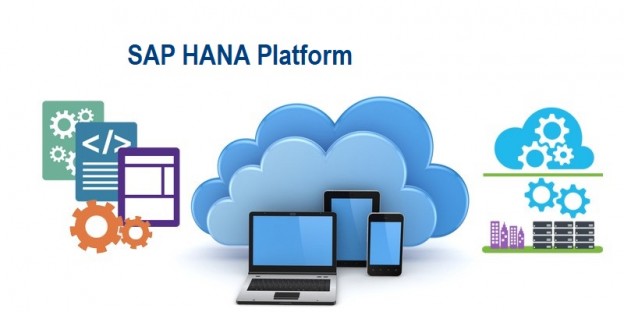In this digital economy, businesses must adapt fast-changing business needs as well as economic situations. Modern technology and efficient database could help companies in streamlining the processes, gain detailed business intelligence and automate operations. SAP HANA platform helps you simplify and accelerate processes via increased analytical and transactional performance. It offers ideal foundation of applications, powering the business and helps you take benefit of world-class development tools. In addition, it simplifies the system administration as well as IT operations to monitor the processes, achieve constant availability, and ensure application and data security. Enhanced transaction speed, flexible queries, predictive modeling and compelling benefits are some of the compelling benefits of SAP HANA.
Modernize Data-Driven Businesses
In order to compete in this digital economy, organizations have to react instantly to the changing economic situations and business conditions. Technology is a key to success for such companies. Modern technology helps in streamlining the processes, automate business and office functions as well as distribute business intelligence. Database is foundation, owing to which SAP HANA Cloud becomes possible. Efficient database enables organizations in instantly process massive volumes of transactional and operational data in order to strengthen the competitive position. The SAP provides in-memory database platform to data-driven enterprises with highest functionality and performance. Considering this, most organizations are moving database platforms to SAP HANA.
Simplify and Accelerate Operations
Data is among the most valuable assets and its consistent access is smooth day-to-day operations. The SAP HANA could dramatically enhance the speed of analytical and transactional workloads. Utilizing single data copy over unified platform, the SAP HANA arranges data within the columns and thereafter distributes as well as stores the data over high-speed memory among multiple servers. It provides you instant queries, which aggregate the data efficiently, while preventing expensive scans, analytic indexes and materialized views.

The modern organizations depend on the business intelligence apps in order to make fast decisions and SAP HANA is foundation of these apps. Analytics processing made over advanced algorithms and in-memory data technologies delivers real-time business insights. Hybrid analytical and transactional processing abilities help businesses in developing next-generation apps as well as implement them over any device. Through best implementation tools, you could provide customized experiences to the users with correct data at correct time.
SAP HANA enables businesses to monitor the processes, ensure application security as well as helps in achieving constant availability. Administrative capabilities of SAP HANA include system start, restart, stop, recover and backup and the best part is you can manage the SAP HANA platform on any of the device from all across the world. Besides, with advanced tooling, businesses can analyze SQL (Structured Query Language) execution plans, memory utilization and CPU with time to pinpoint the problems.
Have a Success Plan
It has been said that advanced planning is a key to SAP HANA implementation. The migration to SAP HANA needs updates to most of the essential components of system like database, hardware, unbundled environment and application environment. As SAP HANA has columnar database, the heterogeneous migrations via row-based databases need additional planning to make sure problem-free implementation.
At the time of SAP HANA deployment, you should size the hardware. The potential challenges made by incorrect size hardware cannot be able to meet the performance goals as well as accommodate the future growth. As SAP HANA stores and structures the data differently as compared to relational databases, so it has different hardware resource needs. It has small data storage footprint; although, it requires additional memory resources and high CPU performance. In case, you utilize the multi-temperature data management practices or conduct the analytical processing over SAP HANA platform, then you will have to take an account for performance needs of individual workloads.
The SAP implements the optimized and standardized processes, permitting apps to access the stored data in SAP HANA. In order to check the SAP HANA’ performance, the applications have to execute the processes as per the business requirements via modifying the processes. On a regular basis, the custom code utilizes the traditional data modeling methods that does not suit SAP HANA. Therefore, to guarantee the optimal performance, businesses have to update the tailored applications prior SAP HANA migration.
Often, in-house teams lack experience of deploying the SAP HANA. Data migration depends on complexity of exiting database as well as needs strategic planning in order to prevent disrupting the usual business processes. The complex business needs might need expertise, which is much needed by your team. Moreover, there are plenty of third-party tools that will assist in the SAP HANA migration and you have to understand tools usability prior beginning the migration.
A few third-party apps’ version has to connect to the earlier SAP databases could not correlate with the SAP HANA. Businesses should upgrade the applications to the versions while migration process in such scenarios. The upgradation process might take long in many applications. In case, the mission-critical apps are not supported over SAP HANA, entire project might not be possible. Hence, before implementing, you should verify that third-party apps must have migration path, which is clear and would continuously work with the SAP HANA.
Migration to SAP HANA needs investments in the database software, annual maintenance and dedicated hardware. It needs installing of SAP HANA over certified infrastructure, whether existing resources or dedicated resources leveraged via TDI program.
Often, significant investments within additional resources are needed. The SAP HANA installation size is related to software and hardware costs. The SAP HANA’ platform size failure could result in higher costs for the database storage that is not used.
Understand the Options
Whether it is virtual machine, bare-metal, on-premises, managed service, TDI or appliance, a lot of options are available. Businesses can select SAP HANA implementation that suits their business requirements, resources and budget.
Deploy Managed Service or On-Premises
Businesses have entire control over scalability, configurability and security of SAP HANA systems. Through increases flexibility, on-premises implementation enables them to configure as well as reconfigure software and hardware in order to meet the evolving needs. As machinery is located physically in the building as well as managed by the IT department, you possess direct control on the data security. Though, you are accountable for complete costs of the software and hardware needed to implement the SAP HANA platform. To have successful operation, the IT department should be core capability of the business. You will require qualified and skillful system administrators to monitor and maintain the SAP HANA platform.
Within the deployment of managed service, third-party provider creates, manages and hosts the complete SAP HANA service in the private cloud hosting service. Hosted private clouds could offer enhanced on-request scalability as service providers’ pool numerous resources among most customers. Additionally, managed services simplify the security as service provider is accountable for digital and physical security of the SAP HANA solution. Though, in the managed service, businesses have to rely on service provider for quality experience.
Run Bare-Metal Server or Virtual Machine
The virtualization software could increase efficiency of SAP HANA infrastructure. Within virtualized system, resource abstraction layer categorizes the available software and hardware resources across different SAP HANA platforms. It permits businesses to run several SAP HANA workloads over scale-out and single node certified SAP HANA systems.
When talking about non-production environment, the virtualization software could speed the SAP HANA app development as well as testing by permitting several developers to make use of single physical resource. Scalability offered by virtualization software permits developers in order to provision what exactly they require, under-provisioning and eliminating over. The self-service abilities allow developers provision the resources when they require as well as automatically leave the resources the moment they are not needed.
Utilizing virtualization software in the SAP HANA work environments, IT operations could deliver the resources via increases SLAs (Service Level Agreements). The automated provisioning capabilities permit IT operations in order to deploy the SAP HANA instantly as well as effortlessly manage the highest analytic workloads with scalability.
Partner with Go4Hosting for SAP HANA Implementation
Go4Hosting provides a wide range of products and services in order to support the SAP HANA implementation. From appliances made on Enterprise-grade storage platforms to CI (Converged Infrastructure) architectures, managed service implementation and SAP HANA integration consulting, we cater our clients with utmost care.
Make Platform with Enterprise-Grade Hardware
The computing needs of SAP HANA need good hardware along with resources, which could be deployed instantly in any of the data center. Storage devices, networking equipment and CI group servers in the single package with software for orchestration, automation and IT infrastructure management. Result is single optimized package, which minimizes the complexity as well as enhances the IT efficiency.
Understand Recovery and Backup Options
Data recovery and backup is major part of SAP HANA implementation. HDID (Hitachi Data Instance Director) secures the SAP HANA database utilizing instant backup policy along with configurable RPO (Recovery Point Objective) as well as retention periods.
The HDID automates the copy data management and permits you to make the snapshot backups of SAP HANA database at defined frequency. The snapshots with active configuration of SAP HANA are retained and stored for defined time period.






 Live Chat
Live Chat